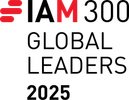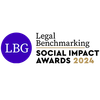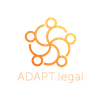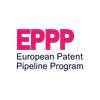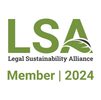European Patent Applications

A European patent can provide protection for an invention in up to 38 countries.
What is a European patent application, and why do I want one?
A patent is a legal monopoly giving the inventor (or their company) of a new and useful device or process the right to stop third parties from making, selling, importing or otherwise, the invention without permission. A patent can be licensed to third parties in return for royalty payments, and forms an asset which can be sold. Profits deriving from patented products and processes can also benefit from preferential tax rates.
The European Patent Convention (EPC) allows a single patent application to be filed and granted to have effect in up to 38 countries (see list below).
European patents are granted by the European Patent Office and have the same legal effect as a national patent in each country for which they are granted.
The alternative to filing a European patent application is to file national patent applications in each country of interest. However, if you wish to pursue patent protection in three or more of the countries covered by the EPC it is generally more cost effective to file a European Patent application than to file individual national patent applications.
What conditions does an invention have to satisfy to be patentable?
To be patentable, an invention must be novel at the time of filing a patent application. This means that the invention must not have been disclosed in a nonconfidential manner prior to a patent application being filed. It is therefore important to decide whether or not to file a patent application before putting a new product on the mark or disclosing the invention.
Sometimes it is necessary to talk to a third party about your invention before filing a patent application – for example where the third party is assisting with testing, or is being approached for funding. In such cases it is important to use a nondisclosure (confidentiality) agreement to reduce the risk of this disclosure causing problems for any patent application subsequently filed.
In addition to being novel, an invention must also be inventive. This means that the invention must be more than an obvious development of what is already known.
Some types of invention, such as pure business methods, are not patentable at all, even if they would be considered novel and inventive. We can advise you as to whether your invention would be likely to satisfy these conditions.
What is the Procedure for Obtaining a European Patent?
The procedure for obtaining a European patent can be divided into five stages – filing and search, publication, examination, grand and opposition. A summary of these stages is given below:
Filing and Search - the first stage is to file an application at the European Patent Office (EPO) together with the search request. The application must at least comprise a description of the invention together with drawings if appropriate, and a set of claims which define the scope of the legal monopoly being sought.
We work with you to prepare a patent application which accurately describes and defines your invention. We will attempt to define your invention in a manner which will cover not only your own implementation of your invention, but also foreseeable variants of your invention which third parties might adopt in order to try to “work around” your patent.
The filing of a first patent application signals the start of a “priority year”. If patent protection is required in other countries then this normally needs to be applied for before the end of the priority year.
If any improvements or modifications are made to the invention during the priority year, these may be included by filing a second or subsequent application.
A second patent application can claim priority from the first application and so preserves the earlier filing date for subject matter which is common to both applications.
Once the application is filed, the European Patent Office (EPO) carried out a search through previously published patent specifications, together with a limited range of other literature, to identify any documents having an earlier date than your application which the EPO considers relevant to assessing the novelty and inventiveness of your invention. This usually takes about three to six months to complete, following which the EPO issues a search report and opinion on patentability. This details any relevant prior publications found in the search and gives a preliminary opinion on whether the invention is patentable. We then report this to you.
The search report enables us to assess the likelihood of the application eventually being granted as a patent. In most cases the search report will be received early enough to be valuable in terms of deciding whether or not to pursue patent protection abroad at the end of the priority year. A response to the opinion must be filed by the deadline for requesting an examination.
Publication - approximately eighteen months after the filing date of the application (or the priority date if priority is claimed from an earlier application), the application and the search report are published by the EPO.
Examination – within six months of publication of the search report, a formal “Examination Request” must be filed at the European Patent Office and the official examination fee paid. At the same time, we must pay a fee to designate all the contracting states of the European Patent Convention.
The application is then passed to an Examiner who will consider whether the invention is novel and inventive. In most cases the Examiner will issue an “Examination Report” detailing any objections to the application. These objections generally relate to the Examiner’s opinion regarding the patentability of the invention. We then report the Examination Report to you and, following discussion with you, we prepare and file a response which deals with the objections.
Grant – on successful completion of the examination stage the EPO issues a notice indicating that it intends to allow the application to be granted as a patent. At this stage, grant and printing fees must be paid and translations of the patent claims into French and German must be prepared and filed. The EPO then publishes the granted patent.
At grant, the European Patent needs to be validated in each of the designated states where patent protection is required. Murgitroyd has direct representation rights in 15 European countries. These countries are Austria, Belgium, Denmark, Finland, France, Germany, Ireland, Italy, Liechtenstein, Luxembourg, Monaco, Norway, Sweden, Switzerland, The Netherlands and the United Kingdom. This involves instructing our foreign associates in each country to attend the national formalities and, in some countries to file translations.
The cost at grant can be quite high if the patent is validated in designated states, especially where full translations of the patent specification are required. However, it is possible to drop countries of lesser interest at this stage to reduce costs.
- Opposition – after a European patent has been granted it can be opposed by third parties – often the applicant’s competitors – if they believe that the patent has been wrongly granted, for example, because the invention, in their opinion, lacks novelty or does not involve an inventive step. Oppositions must be filed within nine months of publication of the mention of the grant of the patent in the European Patent Bulletin. The examination of oppositions is handled by the European Patent Office.
Renewal fees
Renewal fees must be paid in respect of the third year, and each subsequent year, following the date of filing of the application. The requirement to pay renewal fees for a European Patent application ends with the renewal fee due in respect of the year in which the application becomes a granted patent.
Following grant of a European patent, national renewal fees become payable in respect of each country in which the European patent is validated.
Pre-filing search
In some cases it may be beneficial to carry out a search of the prior art database ourselves before preparing and filing a patent application. We will advise if we think this might be of value to you, and if so can instigate a search and assess the significance of the results of the search.
Patent Box
If you are a company which pays corporation tax, or expects to pay corporation tax in the future, Patent Box tax relief may be available to you in relation to profits attributable to products or processes protected by a UK (or European) patent. Eligible profits may be taxed at a rate of 10% rather than the prevailing tax rate.
Extension States
(designated by payment of additional extension fees):
Bosnia Herzegovina, Montenegro
Validation Countries
Cambodia, Morocco, Republic of Moldova, Tunisia
Designated states
(designated by payment of a single fee, validated individually on grant):
Albania, Austria, Belgium, Bulgaria, Switzerland, Cyprus, Czech Republic, Germany, Denmark, Estonia, Spain, Finland, France, United Kingdom, Greece, Croatia, Hungary, Ireland, Iceland, Italy, Liechtenstein, Lithuania, Luxembourg, Latvia, Monaco, Former Yugoslav Republic of Macedonia, Malta, Netherlands, Norway, Poland, Portugal, Romania, Serbia, Sweden, Slovenia, Slovakia, San Marino & Turkey
If you would like to learn more about European Patent Applications, please don’t hesitate to contact us.




